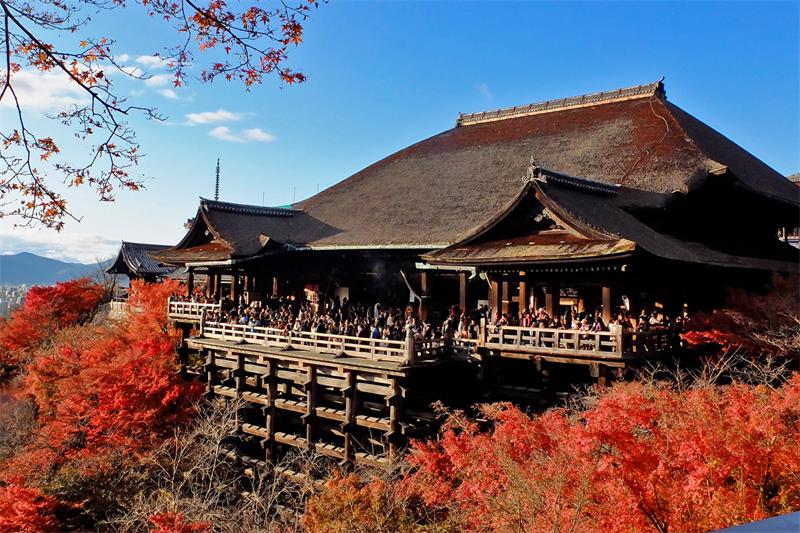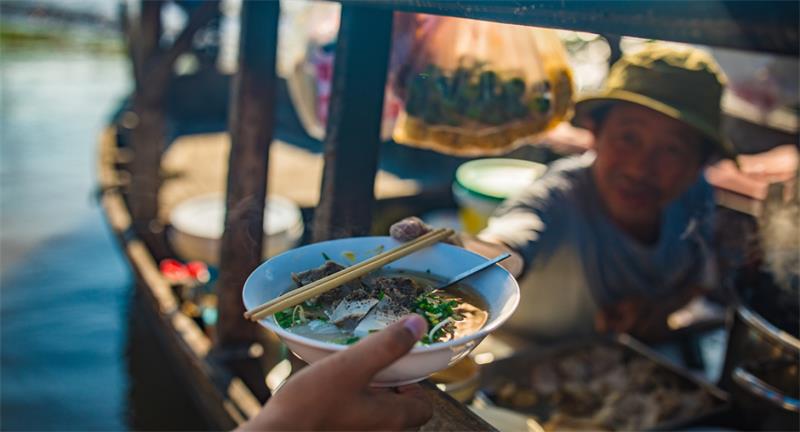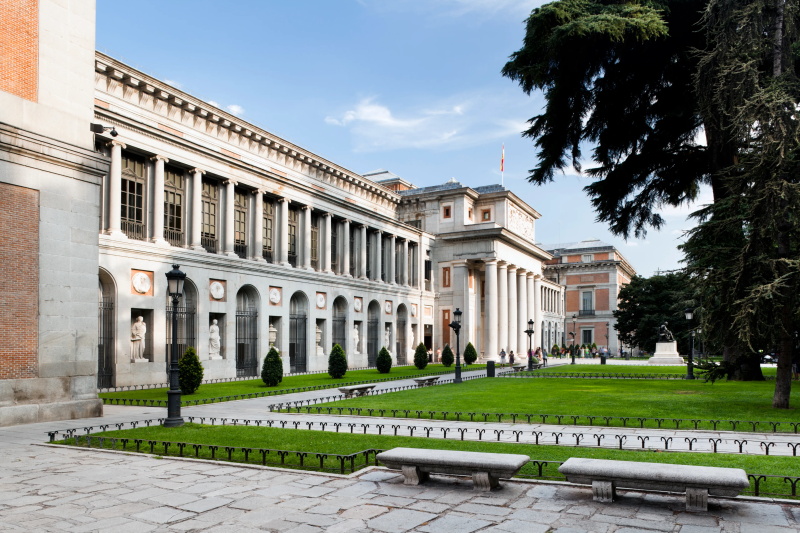Contents
- 1 The History and Significance of Kyoto
- 2 Why Visiting Sacred Temples Is a Must-Do Activity in Kyoto
- 3 The Must-Visit Temples
- 4 Hidden Gems: Off-the-Beaten Path Temples
- 5 The Spiritual Experience: Participating in Temple Rituals
- 6 Food for Thought: Traditional Cuisine at Temple Restaurants
- 7 Getting There and Around Kyoto
- 8 Conclusion
Kyoto, the cultural capital of Japan, is a city steeped in history and tradition. It has been the spiritual center of Japan for over a thousand years and is home to some of the most sacred temples in the country.
The city’s rich cultural heritage can be seen in its architecture, art, music, and cuisine. It is not surprising that Kyoto is one of the most popular tourist destinations in Japan – there is simply so much to see and experience.
The History and Significance of Kyoto
Kyoto was once the capital of Japan and was known as Heian-kyo during this period. It was founded in 794 CE by Emperor Kammu, who wanted to move away from Nara due to political struggles with Buddhist monks. During this period, Kyoto became a hub for artistic expression, literature, and religion.
Over time, Kyoto became a major center for religion with over 2000 Buddhist temples and Shinto shrines located within its borders. These temples are not just monuments to religion – they are also repositories of art treasures that reflect Japan’s rich cultural heritage.
Why Visiting Sacred Temples Is a Must-Do Activity in Kyoto
Visiting the sacred temples in Kyoto should be at the top of any tourist’s list when visiting this beautiful city. These temples offer visitors a glimpse into Japanese history and spirituality that cannot be experienced anywhere else. The sacred temples are often set amidst beautiful natural scenery like mountains or bamboo groves which can make visitors feel transported back into ancient Japan where Buddhism flourished without interruption from external influences.
There is also something incredibly calming about walking through these serene spaces – it’s almost like walking through an oasis amidst busy city life. The peaceful atmosphere created by these temples makes it easy for travelers to find inner peace away from the chaos of everyday life.
Moreover, in addition to their historical significance, the temples themselves are often breathtakingly beautiful and reflect the architectural style of certain time periods in Japan. Many of them are also UNESCO World Heritage sites, making them a must-visit destination for history and culture enthusiasts alike.
Visiting Kyoto’s sacred temples is not just an activity for travelers who want to immerse themselves in Japanese history and spirituality – it is a journey that can transform one’s perspective on life itself. These temples are timeless monuments that offer a window into Japan’s past and its present.
The Must-Visit Temples
The Touristy Yet Stunning Kiyomizu-dera
Are you looking for an insta-worthy temple? Then Kiyomizu-dera is the one for you!
Despite its crowdedness, this temple’s unique architecture and stunning scenery make it a must-visit. The temple is built into the side of a mountain, allowing visitors to enjoy panoramic views of Kyoto city.
It is also known for its Jishu Shrine, where visitors can try their luck at finding love through a unique matchmaking ritual. The main hall of Kiyomizu-dera is currently under renovation, but don’t let that stop you from visiting this iconic temple.
Fushimi Inari-taisha: A Hike Worth Taking
If you’re up for a bit of exercise and adventure, then Fushimi Inari-taisha should be at the top of your list. This shrine is famous for its thousands of torii gates that line the hiking trail up to the summit of Mount Inari.
The hike can take anywhere from 2 to 4 hours depending on your pace, but it’s well worth it as you’ll be rewarded with breathtaking views and an unforgettable experience. Make sure to wear comfortable shoes and bring plenty of water as there are few places to rest along the trail.
Kinkaku-ji: A Golden Wonder
Prepare to be wowed by the sheer beauty of Kinkaku-ji or “The Temple of the Golden Pavilion”. Its name says it all – this temple features a stunning three-story golden pavilion surrounded by tranquil gardens and ponds.
This UNESCO World Heritage site was originally built in 1397 as a retirement villa but was later converted into a Zen Buddhist temple by Shogun Ashikaga Yoshimitsu. It’s truly one-of-a-kind and should not be missed on your visit to Kyoto.
Nijo Castle: The Royal Temple
While not technically a temple, Nijo Castle is a must-visit attraction in Kyoto. Built in 1603 as the residence of the shogun, it features an impressive palace complex that gives visitors a glimpse into the opulence of Japan’s Edo period.
The castle’s highlight is its “nightingale floors” which squeak like birds when walked upon – an ingenious security feature to alert guards of potential intruders. Make sure to also check out the beautiful gardens surrounding the palace.
Sanjusangendo: A Hall of Statues
Looking for something unique? Head over to Sanjusangendo which translates to “Hall with 33 Bays”.
Inside this long hall are 1001 statues of Kannon, the goddess of mercy, each with 11 heads and multiple arms. The hall was built in 1164 and is one of the oldest wooden structures in Japan.
Visitors can also witness archery contests held here during traditional festivals. Kyoto is home to a plethora of temples and shrines that will leave you awe-inspired.
While some may be jam-packed with tourists, they’re still worth visiting for their beauty and cultural significance. Remember to respect local customs and traditions when visiting these sacred sites.
Hidden Gems: Off-the-Beaten Path Temples
Discovering Kyoto’s Best Kept Secrets
When most people think of Kyoto, they likely envision the famous golden temple, stunning gardens, and massive torii gates. However, this beautiful Japanese city is also home to a plethora of hidden gem temples that are just as worthy of visiting as their popular counterparts.
One such temple is Shoren-in, a peaceful and tranquil oasis located in the bustling Higashiyama district. This temple boasts stunning Japanese gardens that are not overly crowded with tourists like some of the other more well-known temples in the area.
Take a moment to sit and enjoy the peaceful surroundings while contemplating life’s mysteries. Another hidden gem worth visiting is Nanzen-ji temple, one of Kyoto’s most important Zen Buddhist temples.
Unlike other popular temples where swarms of tourists can often detract from the spiritual experience, Nanzen-ji offers a much more intimate setting for prayer and meditation. Visitors can explore various buildings within the complex including a beautiful brick aqueduct that dates back to 1890.
One final hidden gem worth exploring is Tofuku-ji Temple located in Southern Higashiyama. While it may not have as much notoriety as its famous neighbor Fushimi Inari-taisha shrine (known for its thousands of vermilion torii gates), Tofuku-ji has its own unique charm with its stunning autumn foliage and tranquil garden atmosphere.
Overlooked Beauty
It’s unfortunate that so many tourists flock to see only the popular temples when there are so many overlooked gems just waiting to be explored. While I understand wanting to see famous landmarks during your travels, there’s something truly special about discovering an overlooked beauty all on your own.
The lesser-known temples allow for a more personal experience without large crowds bustling around you. It’s a chance to slow down, take a deep breath, and appreciate the beauty of Japanese culture without feeling rushed or overwhelmed.
Hidden Treasures
I believe that the hidden gem temples are where travelers can truly experience the magic of Kyoto. These often-overlooked temples offer a more authentic and intimate connection to Japan’s rich history than some of the tourist-packed landmarks.
Not only do these temples offer beautiful sights, but they also provide an opportunity for visitors to connect spiritually with themselves and their surroundings. It’s a chance to gain deeper insights into Japanese culture and traditions beyond what is presented in guidebooks.
A True Adventure
Exploring the hidden gem temples in Kyoto adds an extra layer of adventure to your trip. It requires a bit more effort and research than just visiting the popular landmarks, but trust me – it’s worth it.
These lesser-known gems will make your travels feel more personal and rewarding. You’ll come back home with stories that not many other tourists can share, making your trip all the more unique.
Don’t Miss Out
I urge anyone planning on visiting Kyoto to not overlook these hidden gem temples. They may be less well-known than their famous counterparts but they are equally as stunning and significant in Japanese culture.
Do some research before your trip or ask locals for recommendations on which ones are worth exploring. Trust me when I say that discovering these hidden treasures will make your journey through Kyoto one you’ll never forget.
The Spiritual Experience: Participating in Temple Rituals
Exploring the Inner Self through Meditation
The temples of Kyoto are not just architectural masterpieces, but also a place where visitors can explore their inner selves. One of the ways to achieve this is through meditation. Most temples offer meditation sessions that are open to visitors, but it’s important to note that these sessions typically require some level of knowledge and understanding of the practice.
For beginners, there are plenty of resources online or in local bookstores that can provide an introduction to Zen meditation. If you’re confident enough to attempt it at a temple, make sure to arrive early and dress appropriately for the occasion.
Keep in mind that meditation is not a one-time experience; rather, it requires dedication and practice. But if you’re able to commit yourself, you’ll find that discovering your innermost self is truly a profound experience.
Prayer: A Way to Connect with Japanese Spirituality
Another way for visitors to connect with the spiritual side of Kyoto’s temples is through prayer. In Japan, prayer is often synonymous with Shintoism – an indigenous religion unique to Japan – but many Buddhist temples also offer opportunities for prayer. Visitors can purchase omamori – amulets or charms believed by many Japanese people to have protective powers – or ema – small wooden plaques on which you can write your wishes or prayers – at temple shops before offering them at altars inside the temple buildings.
One thing I appreciate about experiencing prayer in Japan is how respectful people are of one another during such practices. Even if you don’t understand all aspects of Japanese spirituality, participating in prayer can be a moving expression of respect for local cultural traditions.
Chanting: Discovering Sounds That Soothe Your Soul
Many temples offer chanting services – a traditional Buddhist practice in which practitioners recite a mantra or sutra together in unison. The practice of chanting can be a powerful tool for connecting with one’s inner self and finding peace.
In some cases, visitors may be able to join the monks in chanting. While this can initially feel intimidating, it’s important to remember that participation is not mandatory, and that chanting is simply a way for individuals to connect more deeply with their own spirituality.
Listening to the sounds of chanting and drumming inside a temple can also be an opportunity to disconnect from the noise of daily life and find a sense of serenity. If you’re looking for an immersive spiritual experience, chanting inside one of Kyoto’s temples could prove an unforgettable experience.
Observing Monks’ Daily Life: A Window into Japan’s Buddhist Culture
For those interested in learning more about Buddhism beyond temple visits, observing monks’ daily life might provide some insights. Some temples offer guided tours where visitors can observe the daily activities of monks – including ceremonies, rituals or even meals – as well as learn about various aspects of Buddhism. It’s worth noting that participating in these tours may require advanced booking or registration – particularly if you’re interested in watching specific ceremonies or activities – but they offer visitors the chance to gain deeper understanding and respect for Japanese Buddhist culture beyond just visiting temples.
Discover Your Own Way to Connect with Japanese Spirituality
Visiting Kyoto’s temples is not just about admiring their beauty; it’s also about discovering your own way to connect with Japanese spirituality. Whether through meditation, prayer, chanting or observing monks’ daily life – there are many opportunities available for travelers looking for deep spiritual experiences.
Every person travels at their own pace, so it’s important not to feel rushed when trying any sort of spiritual practice. Take your time exploring each temple and see what piques your interest most.
I’ll leave you with a quote by Pema Chödrön: “Meditation practice isn’t about trying to throw ourselves away and become something better. It’s about befriending who we are already.”
Food for Thought: Traditional Cuisine at Temple Restaurants
Overview of traditional Japanese cuisine served at temple restaurants
When it comes to Japanese cuisine, many people immediately think of sushi and ramen. However, there is so much more to explore in the world of Japanese food, especially when visiting temple restaurants in Kyoto.
These restaurants offer a unique dining experience where visitors can taste traditional dishes that have been enjoyed by monks for centuries. The cuisine served at temple restaurants is often referred to as shojin ryori, which means “devotion cuisine” in Japanese.
This type of cuisine originated in Zen Buddhist monasteries and focuses on using fresh, seasonal ingredients that are prepared simply and elegantly. It is a vegetarian style of cooking that emphasizes the interconnectedness between humans and nature.
Recommendations for must-eat dishes such as shojin ryori (Buddhist vegetarian cuisine)
One must-try dish when visiting a temple restaurant is the classic tofu dish called yudofu. It consists of boiled tofu served in a hot pot with dipping sauce made from soy sauce and grated ginger.
The tofu is silky smooth and absorbs the flavors of the dipping sauce beautifully. Another recommendation is kenchin-jiru, a hearty soup made with root vegetables, mushrooms, tofu, and konjac noodles.
This dish has a deep umami flavor that comes from simmering the vegetables in kombu (kelp) broth. For those who love tempura-style dishes but want something light and healthy, try tempura made with seasonal vegetables like lotus root or eggplant.
The batter used for tempura is made from simple ingredients like flour, water, and egg whites. No visit to a temple restaurant would be complete without trying matcha (powdered green tea) desserts such as matcha ice cream or matcha jelly.
These desserts are refreshing and have a delicate bitter flavor that pairs well with sweet red bean paste. Visiting a temple restaurant in Kyoto is a must-do activity for any food lover or traveler interested in experiencing traditional Japanese cuisine.
The dishes served at these restaurants are not only delicious but also have a deep cultural and spiritual significance that reflects the values of Zen Buddhism. So go ahead, indulge in some yudofu or kenchin-jiru, and savor the flavors of Japan’s rich culinary heritage!
Getting There and Around Kyoto
Kyoto is well-connected by train services to Tokyo, Osaka, and other major Japanese cities. From Tokyo, it takes around 2.5 hours on the Shinkansen (bullet train) to reach Kyoto.
If you’re coming from Kansai International Airport, there are regular trains and buses that will take you directly to Kyoto Station. Once in Kyoto, the easiest way to get around is by using public transportation.
The city has an extensive bus network that covers most of the top tourist sites and temples. However, be prepared for crowded buses during peak season.
If you prefer a more leisurely pace or want to explore off-the-beaten-path areas of Kyoto, renting a bicycle is a great option. There are several rental shops near major train stations with reasonable prices.
Conclusion
Visiting the sacred temples of Kyoto is an unforgettable experience that should be on every traveler’s bucket list. The city’s rich cultural heritage and spiritual significance make it a unique destination that cannot be found anywhere else in the world. From the famous Kiyomizu-dera temple perched high atop a hill with stunning views of the city below, to lesser-known hidden gems like Tofukuji temple with its beautiful autumn foliage, Kyoto has something for everyone.
Participating in temple rituals such as meditation or prayer can deepen your understanding and appreciation for Japanese culture and spirituality while trying traditional cuisine at temple restaurants is sure to tantalize your taste buds. Getting around Kyoto may seem overwhelming at first but there are plenty of options available including public transportation or renting bicycles which offer a more leisurely mode of transportation while exploring off-the-beaten-path areas of this historic city.
So why wait? Book your trip now and start exploring everything that beautiful Kyoto has to offer!












